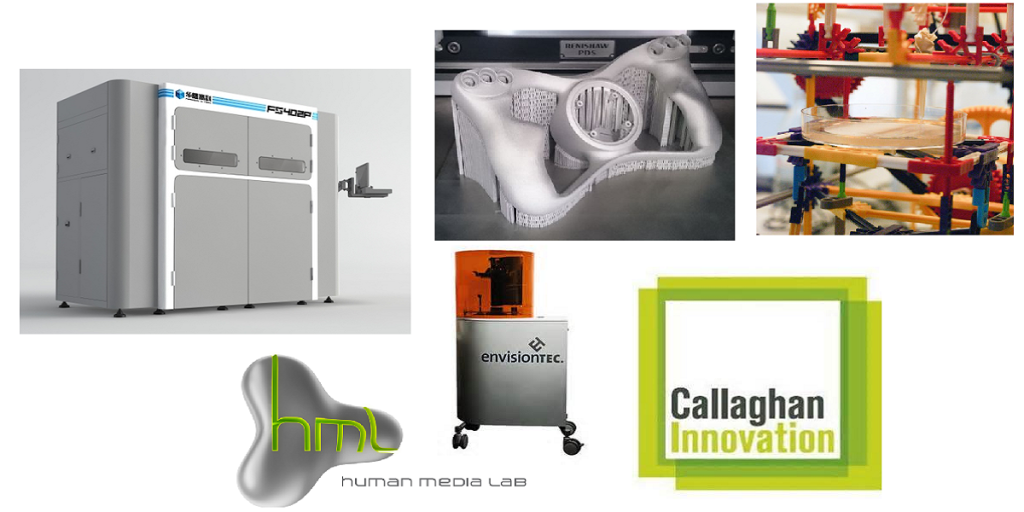In this week’s stories we didn’t cover we have many examples of just how innovative 3D printing can be. For example, the still in-production Bloodhound Super-Sonic car has many 3D printed parts that will hopefully help it break the world land speed record in 2016. New Zealand has committed millions of dollars for new technology research that includes 3D printing, and Queen’s University’s Human Media Lab has made great progress incorporating sensors into 3D printed objects. The latest Perfactory Software, Version 3.1 has been released by EnvisionTEC, and Prodways has joined forces with Hunan Farsoon High-Tech, to focus on new plastic and metal SLS machines. We begin with a really fun story about a team of Netherlands students from University of Technology, Delft who built a 3D bioprinter out of the children’s building toy K’NEX!
Dutch Students Build K’NEX 3D Bioprinter!
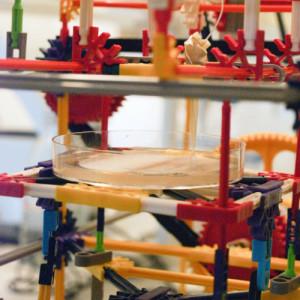 Our first story is quite fun, and inspiring, when it comes to all of the creativity that flows into and out of the 3D printing space. A group of University of Technology students from Delft, Netherlands could not afford a 3D printer so they made one themselves out of the children’s building toy K’NEX. But this isn’t just any 3D printer, as the people who attend Boston’s iGEM competition this weekend will see. This printer prints biofilm (a group of microorganisms with cells stuck together)–which makes it especially valuable to medical researchers. The team used bacterial nanowires, which are electrically conductive thin connections made by bacteria, that render it possible to create the biofilm. Now the students can quickly print bacteria layers, making hydrogel (bio-ink), which is a very promising development for 3D printed medical research. It is also a promising development for K’NEX enthusiasts!
Our first story is quite fun, and inspiring, when it comes to all of the creativity that flows into and out of the 3D printing space. A group of University of Technology students from Delft, Netherlands could not afford a 3D printer so they made one themselves out of the children’s building toy K’NEX. But this isn’t just any 3D printer, as the people who attend Boston’s iGEM competition this weekend will see. This printer prints biofilm (a group of microorganisms with cells stuck together)–which makes it especially valuable to medical researchers. The team used bacterial nanowires, which are electrically conductive thin connections made by bacteria, that render it possible to create the biofilm. Now the students can quickly print bacteria layers, making hydrogel (bio-ink), which is a very promising development for 3D printed medical research. It is also a promising development for K’NEX enthusiasts!
Bloodhound Car Features Many 3D Printed Parts
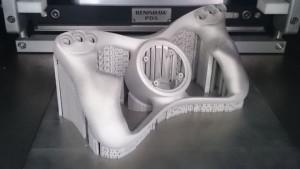 Another toy that dominates children’s imaginations is the race car, and this car may become legendary if it accomplished what it is set out to do. The Bloodhound Super-Sonic Car is a car with over 3,500 custom-made parts–including 3D printed parts. It will be displayed September 24-26th at a sold-out expo at the East Wintergarden venue in Canary Wharf. And there’s much to marvel about regarding the design and manufacturing of the car. The steering wheel, for example, has been designed to match driver Andy Green’s hands; his hands were scanned and then 3D printed by Renishaw PLC. 3D printing was chosen for this because of its rapid prototyping and customizing capabilities. The final version of the steering wheel is expected to be printed in titanium at Renishaw’s Gloucestershire factory using a “powerful laser to fuse micron-scale metal particles together, creating the steering control layer-by-layer.” The car’s nose tip will also be printed in titanium, and its auxiliary air intakes are 3D printed using selective laser sintering in carbon fiber. There will be more opportunities to view the car in the near future, but after the expo, it returns to its design headquarters in Bristol so all parts can be integrated to prepare the car to break the world land speed record in 2016. The goal is to get over 1,000 mph, and if that happens, 3D printing will be partly to thank for this new super-sonic speed record!
Another toy that dominates children’s imaginations is the race car, and this car may become legendary if it accomplished what it is set out to do. The Bloodhound Super-Sonic Car is a car with over 3,500 custom-made parts–including 3D printed parts. It will be displayed September 24-26th at a sold-out expo at the East Wintergarden venue in Canary Wharf. And there’s much to marvel about regarding the design and manufacturing of the car. The steering wheel, for example, has been designed to match driver Andy Green’s hands; his hands were scanned and then 3D printed by Renishaw PLC. 3D printing was chosen for this because of its rapid prototyping and customizing capabilities. The final version of the steering wheel is expected to be printed in titanium at Renishaw’s Gloucestershire factory using a “powerful laser to fuse micron-scale metal particles together, creating the steering control layer-by-layer.” The car’s nose tip will also be printed in titanium, and its auxiliary air intakes are 3D printed using selective laser sintering in carbon fiber. There will be more opportunities to view the car in the near future, but after the expo, it returns to its design headquarters in Bristol so all parts can be integrated to prepare the car to break the world land speed record in 2016. The goal is to get over 1,000 mph, and if that happens, 3D printing will be partly to thank for this new super-sonic speed record!
New Zealand Allocates Technology Research Funds, Including 3D Printing
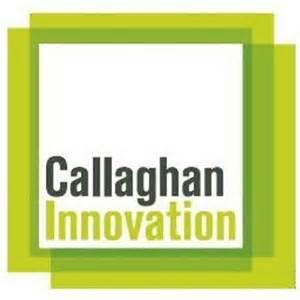 $32.92 million has been committed for New Zealand’s seventh Science for Technological Innovation National Science Challenge. The goal of this Challenge, which is hosted by Callaghan Innovation and involves eight universities and three Crown research institutes, is to use technology to develop commercially successful breakthrough products. New Zealand’s Science and Innovation minister, Steven Joyce, says the Challenge: “…will aim to enhance New Zealand’s capacity to use physical and engineering sciences for economic growth with an emphasis on new materials, new manufacturing processes, robotics, automation and analytics.” Included in this research will be biopolymers, that can work as plastic in 3D printing.
$32.92 million has been committed for New Zealand’s seventh Science for Technological Innovation National Science Challenge. The goal of this Challenge, which is hosted by Callaghan Innovation and involves eight universities and three Crown research institutes, is to use technology to develop commercially successful breakthrough products. New Zealand’s Science and Innovation minister, Steven Joyce, says the Challenge: “…will aim to enhance New Zealand’s capacity to use physical and engineering sciences for economic growth with an emphasis on new materials, new manufacturing processes, robotics, automation and analytics.” Included in this research will be biopolymers, that can work as plastic in 3D printing.
Human Media Lab Researchers Advance Touch Sensors in 3D Printed Objects
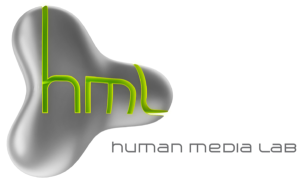 At the INTERACT 2015 conference in Bamberg, Germany, a new way to incorporate simple pressure and touch sensors into 3D printed objects was introduced by a team of Queen’s University’s Human Media Lab researchers–including one professor and three students. Known as “PrintPut,” this method embeds interactivity directly into 3D printed objects using conductive ABS filament, a dual extruder 3D printer, and scripts that generate conductive geometry. This allows an industrial designer to incorporate buttons, touchpads, sliders and flex sensors into 3D designs, without too many wires. Instead, interaction points are “seamlessly integrated” within the object’s existing surface geometry and wires are internally routed “to a common connection point.” Once an object is 3D printed, if it is connected to “an Arduino or other microcontroller with alligator clips” its sensor values can be read.
At the INTERACT 2015 conference in Bamberg, Germany, a new way to incorporate simple pressure and touch sensors into 3D printed objects was introduced by a team of Queen’s University’s Human Media Lab researchers–including one professor and three students. Known as “PrintPut,” this method embeds interactivity directly into 3D printed objects using conductive ABS filament, a dual extruder 3D printer, and scripts that generate conductive geometry. This allows an industrial designer to incorporate buttons, touchpads, sliders and flex sensors into 3D designs, without too many wires. Instead, interaction points are “seamlessly integrated” within the object’s existing surface geometry and wires are internally routed “to a common connection point.” Once an object is 3D printed, if it is connected to “an Arduino or other microcontroller with alligator clips” its sensor values can be read.
EnvisionTEC Launches Latest Perfactory Software, Version 3.1
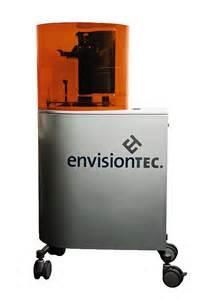 At this year’s Euromold, Michigan-based EnvisionTEC has unveiled its new Perfactory Software, version 3.1. This version has several new features that include a user experience that is “more streamlined,” unified EnvisionTEC 3D printer families, integration with the 3D-Bioplotter, and support construction capabilities that are upgraded. In fact, now engineers have more control over supports, since they are no longer automatically added. The new version of the software targest more serious users in general–allowing users to save design time by maintaining settings between different 3D printers. Also, it will be easier for them to switch “between the the 3D-Bioplotter, the DLP machines, and the 3SP machines.”
At this year’s Euromold, Michigan-based EnvisionTEC has unveiled its new Perfactory Software, version 3.1. This version has several new features that include a user experience that is “more streamlined,” unified EnvisionTEC 3D printer families, integration with the 3D-Bioplotter, and support construction capabilities that are upgraded. In fact, now engineers have more control over supports, since they are no longer automatically added. The new version of the software targest more serious users in general–allowing users to save design time by maintaining settings between different 3D printers. Also, it will be easier for them to switch “between the the 3D-Bioplotter, the DLP machines, and the 3SP machines.”
Prodways Teams Up with China’s Hunan Farsoon High-Tech
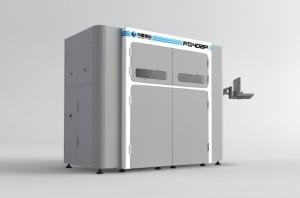 In other 3D printed news, Prodways has announced a partnership with China’s Hunan Farsoon High-Tech to develop a 3D printer product range focusing on full plastic and metals. Farsoon’s full range of selective laser sintering (SLS) models — the company is the world’s third largest in SLS manufacturing–will be the basis of the new product line. And this will catapult Prodways as the “only non-American company to offer a range of technologies using plastic and metal powders as well as liquid resins.” This partnership brings together a powerful research and development component focused on metal and plastic SLS printing, to benefit industrial customers worldwide.
In other 3D printed news, Prodways has announced a partnership with China’s Hunan Farsoon High-Tech to develop a 3D printer product range focusing on full plastic and metals. Farsoon’s full range of selective laser sintering (SLS) models — the company is the world’s third largest in SLS manufacturing–will be the basis of the new product line. And this will catapult Prodways as the “only non-American company to offer a range of technologies using plastic and metal powders as well as liquid resins.” This partnership brings together a powerful research and development component focused on metal and plastic SLS printing, to benefit industrial customers worldwide.
That’s some of this week’s news we didn’t highlight! Let us know which were your favorites in the 3D Printing Stories We Missed Forum Thread on 3DPB.com.
Subscribe to Our Email Newsletter
Stay up-to-date on all the latest news from the 3D printing industry and receive information and offers from third party vendors.
Print Services
Upload your 3D Models and get them printed quickly and efficiently.
You May Also Like
Consolidation in AM: How 2025 Is Shaping the Industry’s New Normal
The first half of 2025 has been marked by a clear shift in the additive manufacturing (AM) industry. Companies are no longer just focused on developing new tech by themselves....
Etsy Design Rule Change Reduces Selection of 3D Printed Goods
Online marketplace Etsy has implemented a rule change requiring all 3D printed goods on the site to be original designs. The update to the site’s Creativity Standards states, ¨Items produced using...
U.S. Congress Calls Out 3D Printing in Proposal for Commercial Reserve Manufacturing Network
Last week, the U.S. House of Representatives’ Appropriations Committee moved the FY 2026 defense bill forward to the House floor. Included in the legislation is a $131 million proposal for...
Transforming From Tourist to Native: Duro CEO Michael Corr Explains Why the Company Rebuilt its PLM Software on AI
In these early innings of the AI boom, many market analysts have expressed concern that AI spend has gotten too far ahead of the technology’s proven ability to deliver significant...


